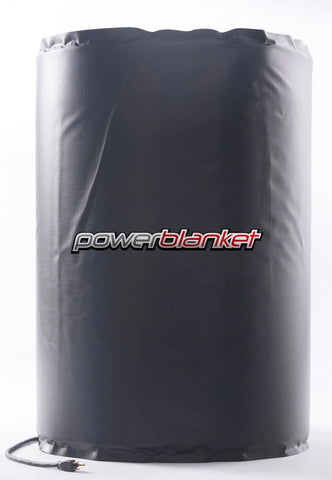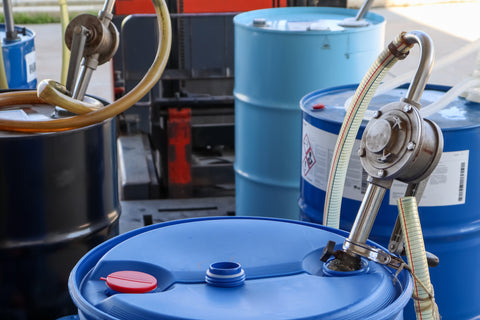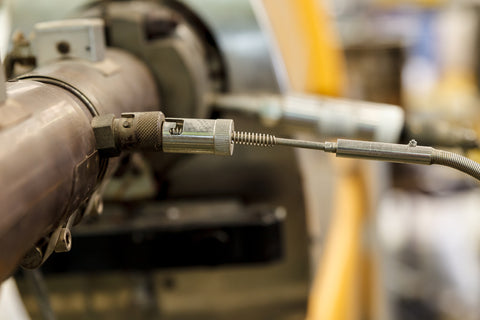The Importance of Temperature in PF Resin Applications
In industrial materials, PF (phenol-formaldehyde) resin stands out for its robustness and versatility, particularly in high-temperature applications. A key factor influencing the efficacy and quality of PF resin applications is the precise control of temperature during the curing process. This blog post explores the complex relationship between temperature and PF resin applications, unraveling the challenges and strategies in navigating these temperature requirements to optimize product quality and performance. Whether in the realm of plywood manufacturing or in the broader spectrum of wood-based panel productions, understanding and controlling temperature is paramount.
Decoding PF Resin and Its Industrial Significance
Phenol formaldehyde (PF) resin is a synthetic polymer renowned for its exceptional properties, including high tensile strength, durability, and resistance to chemicals and high temperatures. Originating from the reaction between phenol and formaldehyde, PF resin is a staple in industries requiring materials that withstand harsh environments.
PF resin offers superior heat resistance and mechanical strength compared to other resins like epoxy. It is the material of choice for applications subjected to high temperatures and demanding physical conditions. Epoxy resin, with its versatile applications ranging from coatings to adhesives, is lauded for its strong bonding capabilities and ease of use. However, when enduring extreme temperatures and chemical exposures, PF resin's robustness is unparalleled. This section will explore these properties further, highlighting the significance of PF resin in industrial applications where performance under stress is a prerequisite.
Expanding on the robust and versatile nature of Phenol-Formaldehyde (PF) resin, it's essential to delve deeper into the aspects that set it apart from other resins, notably epoxy resin, and its specific applications in industries that demand the highest standards of durability and resistance.
While epoxy resin is celebrated for its versatility, encompassing applications from coatings to adhesives, and is recognized for its potent bonding capabilities and ease of application, PF resin takes precedence in scenarios demanding unparalleled resistance to high temperatures and aggressive chemical environments. This distinction primarily stems from PF resin's superior mechanical strength and heat resistance, attributes that are critically enhanced through the curing process.
The curing of PF resin, pivotal for achieving its renowned physical properties, typically unfolds at elevated temperatures, which significantly influence its molecular weight—a determinant of the resin's final strength and stability. During this process, the application of heat transforms the resin, optimizing its physical properties to meet the demanding specifications of industrial applications.

Moreover, the compatibility of PF resin with veneers elevates its importance in the production of high-quality plywood. The treatment of plywood surfaces with PF resin, especially when heat treated, results in products that exhibit superior durability, resistance to wood failure, and minimized thickness swelling. The introduction of treatment temperatures, specifically tailored for PF resin, ensures that plywood treated with this material not only meets but exceeds industry standards for mechanical strength and longevity. This process is meticulously monitored to ensure curing times are optimized, guaranteeing the resin's exceptional performance.
The role of additives, such as acetic acid and formic acid, in the curing process of PF resin cannot be overlooked. These chemicals facilitate the curing reaction, enhancing the bonding strength of the resin to wood veneers, thus significantly reducing the potential for wood failure in the final product. This chemical modification is crucial for producing plywood that can withstand the rigors of use in various environments, from construction to high-end furniture making.
In the realm of specialized resins, novolac resin, a type of phenolic resin, stands out for its application in contexts requiring exceptional stability and resistance to solvents and chemicals. Like PF resin, novolac resin undergoes a specific curing process, albeit with different curing agents, leading to materials with unique properties suitable for a wide range of industrial applications.
PF resin's adaptability and performance are further showcased in standardized tests, such as the three-point bending test, which assesses the mechanical properties of wood products treated with the resin. These tests confirm the resin's enhanced physical properties, including increased bending strength and reduced susceptibility to environmental stressors.
In conclusion, decoding PF resin and its industrial significance underscores the material's indispensable role across various sectors. Careful tuning of treatment temperatures and curing times and strategic use of chemical additives are key to harnessing PF resin's full potential and ensuring it continues to meet the evolving demands of industrial applications with unmatched efficiency and reliability.
The Critical Role of Temperature in PF Resin Applications
What Temperature is Phenol Formaldehyde Resin Cured At?
Temperature is a pivotal factor in the curing process of PF resin, directly affecting its mechanical and physical properties. So, what temperature is PF resin cured at? The optimal curing temperature for PF resin, typically ranging from 140°C to 180°C (284°F to 356°F), is crucial for initiating the cross-linking reaction that gives the resin its strength and durability. The exact temperature can vary depending on the specific formulation of the resin, the presence of any additives, and the desired properties of the final product. Precise control of the curing temperature ensures the resin achieves its optimal physical and mechanical properties. Deviations from this temperature can result in incomplete curing, adversely affecting the resin's mechanical properties and bonding capabilities.
Understanding the thermal dynamics of PF resin is essential for manufacturers to tailor the curing process to meet specific application needs. For instance, higher temperatures can accelerate curing but may also increase the risk of uneven curing and internal stresses. Conversely, lower temperatures may produce stronger, more uniform bonds but require longer curing times. This balance between temperature and curing time is critical for achieving the final product's desired physical and mechanical properties.

What is the Melting Point of PF Resin?
The melting point of phenol formaldehyde (PF) resin can vary depending on its specific formulation and the degree of polymerization. Generally, PF resins don't have a distinct melting point because they are thermosetting polymers. Unlike thermoplastics, thermosetting polymers do not melt; they undergo a curing process that forms a cross-linked, three-dimensional network. Once cured, PF resins become insoluble and infusible, meaning they cannot melt but will decompose upon heating to high temperatures.
Typically, the thermal decomposition of PF resin starts at temperatures above 200°C (392°F), with significant degradation occurring at higher temperatures. It's important to note that the thermal stability and degradation temperature can be influenced by the resin's composition, including the ratio of phenol to formaldehyde and the presence of any fillers or additives.
Temperature Techniques for Enhanced PF Resin Application
Advancements in temperature control techniques have significantly enhanced the application process of PF resin, ensuring optimal curing and improved material properties. Two key methods stand out in this domain: hot pressing and heat treatment.
Hot Pressing and Its Benefits: Hot pressing, a method that applies both heat and pressure to resin-coated wood surfaces, has become a cornerstone in the production of plywood and other wood-based panels. This process not only facilitates faster curing of PF resin but also ensures a uniform distribution of heat, which is crucial for achieving consistent mechanical properties across the panel. Hot pressing dramatically improves the bonding strength between wood veneers, leading to plywood with enhanced durability and resistance to environmental factors.
The Science of Heat Treatment: Beyond the initial curing process, heat treatment of PF resin-treated wood products can further enhance their physical and chemical characteristics. This thermal treatment process, typically conducted at high temperatures, alters the molecular structure of the resin, improving its resistance to moisture, decay, and insects. Heat treatment also contributes to the dimensional stability of the wood, ensuring that it maintains its shape and size under varying environmental conditions.
Barrel and Drum Heaters for Optimal Temperature Control: In the intricate process of storing and handling PF resin, maintaining the correct temperature is crucial to preserve its chemical integrity and ease of application. This is where electric drum heaters emerge as an indispensable tool for industries reliant on this resin. These heaters are specifically designed to wrap around barrels and drums, providing a uniform heat distribution that keeps the PF resin within its optimal temperature range for use. By employing electric drum heaters, manufacturers can avoid the resin becoming too viscous or undergoing premature polymerization, which could compromise its quality and applicability. This method of temperature control ensures that PF resin is maintained at just the right consistency for application, enhancing its performance and reliability in various industrial processes. Moreover, the precise temperature regulation afforded by electric drum heaters facilitates a more efficient use of the resin, reducing waste and improving the sustainability of operations that depend on PF resin's unique properties.
Addressing Temperature Variabilities in Plywood Resin Application
The application of PF resin in plywood manufacturing poses unique challenges, particularly in controlling temperature across the diverse stages of production. The effectiveness of heating methods, such as the use of heat guns and hot pressing, is crucial for achieving high-quality plywood.
Heating Methods for Plywood Resin: Employing heat guns and sophisticated hot pressing equipment allows for precise temperature control during the resin application process. This precision is vital for ensuring that the PF resin is evenly cured throughout the plywood, enhancing its surface quality and overall structural integrity.

Impact of Temperature on Plywood Quality: The temperature at which plywood is treated significantly influences its physical and mechanical properties. Optimal heating ensures that the plywood treated with PF resin exhibits superior bonding strength, reduced susceptibility to water absorption, and improved dimensional stability. These qualities are essential for plywood intended for use in construction and furniture, where durability and resistance to environmental stressors are paramount.
Innovations and Methods in Temperature Control
Innovations in temperature control methods have played a pivotal role in the quest for improved efficiency and product quality in PF resin applications. Advanced curing techniques and precise temperature measurement tools have emerged, enhancing the manufacturing process.
Advanced Curing Techniques: The development of faster curing methods for PF resin, such as UV curing and microwave-assisted curing, represents a significant advancement in the field. These techniques offer the dual benefits of reduced curing time and enhanced control over the curing environment, leading to products with consistent and predictable properties.
Laboratory Methods for Temperature Accuracy: Precision in temperature control is not only crucial in industrial settings but also in research and development laboratories. The use of laboratory ovens and digital temperature sensors enables researchers to meticulously study the effects of different temperatures on PF resin properties, paving the way for the development of improved formulations and application methods.
Analyzing the Effects of Temperature on Resin Properties
Temperature not only influences the curing process of PF resin but also plays a critical role in determining its final properties. Understanding these effects is essential for optimizing the performance of PF resin in various applications.
Mechanical Strength and Bonding: Properly cured PF resin exhibits exceptional mechanical strength and bonding capabilities, which are essential for applications requiring durable adhesive bonds. Rudimentary temperature control during the curing process can significantly enhance the shear strength and flexural properties of PF resin.
Decay Resistance and Dimensional Stability: The thermal modification of PF resin-treated wood products enhances their resistance to decay and maintains their dimensional stability. This thermal treatment process, facilitated by precise temperature control, ensures that the wood products are more durable and suitable for a wide range of applications.
Case Studies: Real-world Applications and Results
Exploring real-world applications of PF resin and the outcomes of temperature-controlled treatment processes provides valuable insights into the practical implications of the discussed techniques.
Industrial Applications: PF resin's versatility and durability are showcased in the production of veneers and wood-based panels for construction and furniture. Case studies from these industries demonstrate how precise temperature control during the resin curing process leads to products with superior mechanical properties and longevity.

Comparative Analysis: By comparing treated and untreated PF resin applications, it becomes evident how critical temperature control is for achieving optimal material performance. Products that undergo optimal temperature treatment exhibit better bonding strength, resistance to decay, and dimensional stability compared to those that do not.
Beyond the Heat: Embracing the Future of PF Resin Applications
Temperature plays a crucial role in the application and performance of PF resin, influencing everything from the curing process to the material's final properties. Advanced temperature control techniques, hot pressing, and heat treatment can enhance the durability, strength, and dimensional stability of PF resin-treated products. As technology advances, further innovations in temperature management promise to refine these processes even more, ensuring that PF resin remains a material of choice for a wide array of industrial applications.
Understanding the impact of temperature on PF resin has highlighted several critical areas: from the science behind its curing process to the innovative methods developed for its application to the real-world implications of temperature control on product quality. This exploration underscores the importance of continued research and technological development in the field of material science, particularly in optimizing the use of PF resin across various industries.
As industries strive for materials that offer superior performance under increasingly demanding conditions, the role of PF resin is poised to expand. The insights gained from case studies and laboratory research illuminate the path toward more efficient, sustainable, and high-performing resin applications. By harnessing the power of temperature control, manufacturers can unlock the full potential of PF resin, ensuring that it contributes to the creation of products that are not only durable and reliable but also environmentally friendly and adaptable to future challenges.
The intersection of material science and temperature control technologies represents a frontier of innovation in industrial manufacturing. As we continue to navigate these challenges, the lessons learned from working with PF resin will undoubtedly inform the development of new materials and processes that meet the evolving needs of society.
Future Outlook
Looking ahead, the quest for better temperature control in PF resin applications is likely to spur further innovation in both materials and manufacturing processes. Emerging technologies, such as AI and IoT, could significantly monitor and adjust curing temperatures in real-time, ensuring optimal conditions throughout the production process. This could lead to even greater efficiencies, reduced waste, and enhanced product quality.
Moreover, the environmental impact of manufacturing processes is an ever-present concern. Advances in temperature control methods for PF resin applications could also lead to more energy-efficient production techniques, reducing the carbon footprint of industries reliant on these materials.
In conclusion, navigating the temperature challenges in PF resin applications is a complex task that requires a deep understanding of material science, engineering, and technology. By continuing to explore and innovate in this space, we can look forward to the development of more advanced, sustainable, and high-quality materials that will shape the future of manufacturing and beyond.








